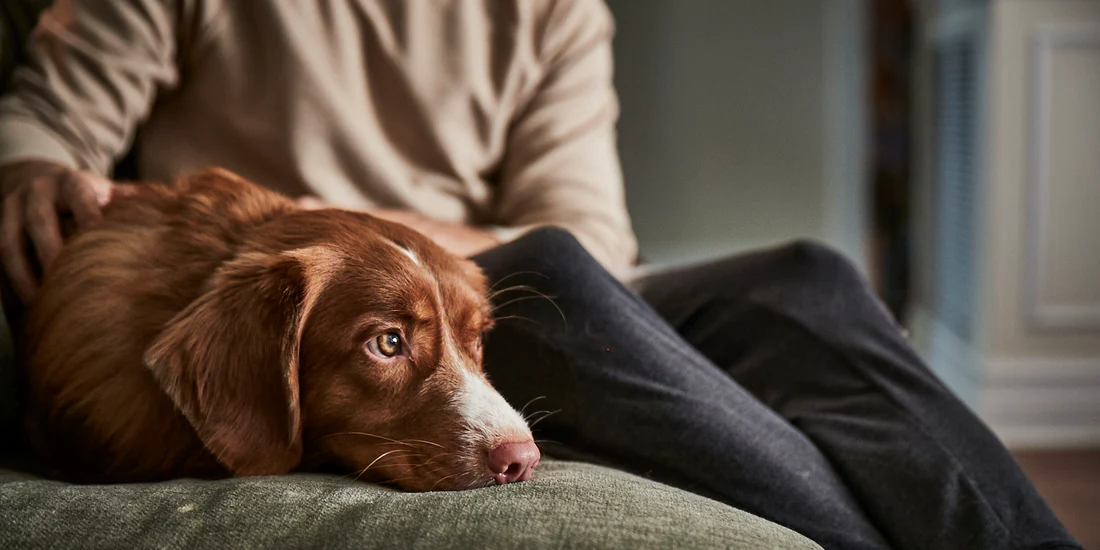Dogs bring boundless joy into our lives — from their goofy grins to their unconditional love.
But for many pet parents, there’s a harder side to that relationship: watching their dog struggle with anxiety.
Whether it’s triggered by loud noises, separation, new environments, or seemingly no reason at all, canine anxiety is more common than many realize. In fact, recent studies suggest that over 70% of dogs show some signs of anxiety-related behaviors, ranging from trembling to excessive barking or even destructive chewing.
While veterinarians can and should be a key part of your dog’s mental health care, not every situation requires medication. In many cases, natural remedies and lifestyle changes can make a big difference. If you’re looking for gentle, holistic ways to help your pup find calm, here are some proven strategies to explore.
1. Daily Routine: Dogs Thrive on Predictability
One of the most overlooked anxiety triggers for dogs is inconsistency. Dogs feel secure when they know what to expect from their environment. Feeding, walking, and bedtime routines are more than just habits — they’re emotional anchors.
Try to keep your dog’s daily schedule as consistent as possible:
- Feed meals at the same times each day.
- Keep walks and bathroom breaks on a steady routine.
- Wind down together at night with a familiar routine (like brushing or a short cuddle session).
Just knowing what’s coming next can go a long way in easing anxiety.
2. Physical Exercise: An Antidote to Stress
An anxious dog is often an under-exercised dog. Physical activity is a natural way to burn off excess energy that could otherwise turn into nervous tension.
How much exercise your dog needs depends on their age, breed, and health — but as a general rule, aim for at least 30 to 60 minutes of physical activity a day. This can include:
- Walks (bonus if they involve new smells and routes)
- Tug-of-war or fetch
- Agility exercises in your backyard
- Swimming, if your dog enjoys it
Even short bursts of activity throughout the day can help release feel-good endorphins.
3. Mental Stimulation: Keep Their Brain Busy
Just like people, dogs can become anxious when they’re bored. Giving your dog something constructive to focus on can keep their mind from spiraling into anxious habits.
Try:
- Puzzle toys and treat-dispensing games
- Training sessions that teach new tricks or reinforce old ones
- Sniff walks (where the goal is to let them explore with their nose rather than cover distance)
- DIY scent games like hiding treats around the house
Mental exercise doesn’t exhaust the body, but it can calm the mind — often just as effectively.
4. Music and Aromatherapy: Soothing the Senses
Sound and scent are powerful tools in helping dogs relax.
Music: Studies show that classical music can reduce barking and lower heart rates in anxious dogs. YouTube and Spotify have playlists specifically designed for calming pets. Try leaving calming music on during storms or when you leave the house.
Scents: Dog-safe essential oils like lavender and chamomile can have a calming effect — but be careful. Dogs have highly sensitive noses, so always use diluted versions and never apply oils directly to their fur. A diffuser in a well-ventilated space is usually the safest option.
5. Natural Supplements and CBD
In recent years, natural supplements have become a go-to option for pet parents seeking gentle solutions for anxiety. Always consult your vet before starting any supplement, but here are a few commonly used options:
- CBD oil (hemp-derived, THC-free): Many dog owners report improvements in anxiety, especially around fireworks or travel. Make sure the product is specifically formulated for pets and comes from a reputable brand.
- L-theanine and L-tryptophan: Amino acids that promote calm and relaxation.
- Valerian root and chamomile: Herbal options often found in calming chews or drops.
Not every supplement works for every dog — it may take a bit of experimentation to find the right fit.
6. Touch Therapy and Calming Tools
Sometimes, simple physical contact is all your dog needs.
- Massage: Gentle strokes along the back, ears, or chest can slow their heart rate and create a sense of safety.
- Thundershirts or calming wraps: These snug-fitting garments apply gentle pressure to the body, similar to swaddling an infant. Many dogs find this grounding and comforting.
- Weighted blankets: Some dogs respond well to light weighted blankets designed for pets (just be sure it’s not too heavy or restricting).
Touch-based therapies work best when you’re calm, too — your dog often mirrors your energy.
7. Create a Safe Space
If your dog is especially reactive to loud noises, guests, or changes at home, having a “safe zone” can give them a much-needed retreat. This could be:
- A cozy crate with a blanket draped over the top
- A quiet corner with their favorite bed and toys
- A room with a white noise machine to muffle outside sounds
Encourage them to go there when they need a break — never use it as punishment. Over time, this space becomes their emotional reset button.
Final Thoughts
Just like with humans, anxiety in dogs isn’t something that’s “fixed” overnight — it’s managed over time, with love, patience, and the right tools. While medication might be necessary for severe cases, many dogs respond beautifully to natural approaches when implemented consistently.
The key is tuning in to your dog’s specific triggers and responses. What works for one may not work for another. But with understanding and a proactive mindset, you can help your pup feel calmer, safer, and more balanced — naturally.
After all, they’ve been there for you. Now it’s your turn to return the peace.

